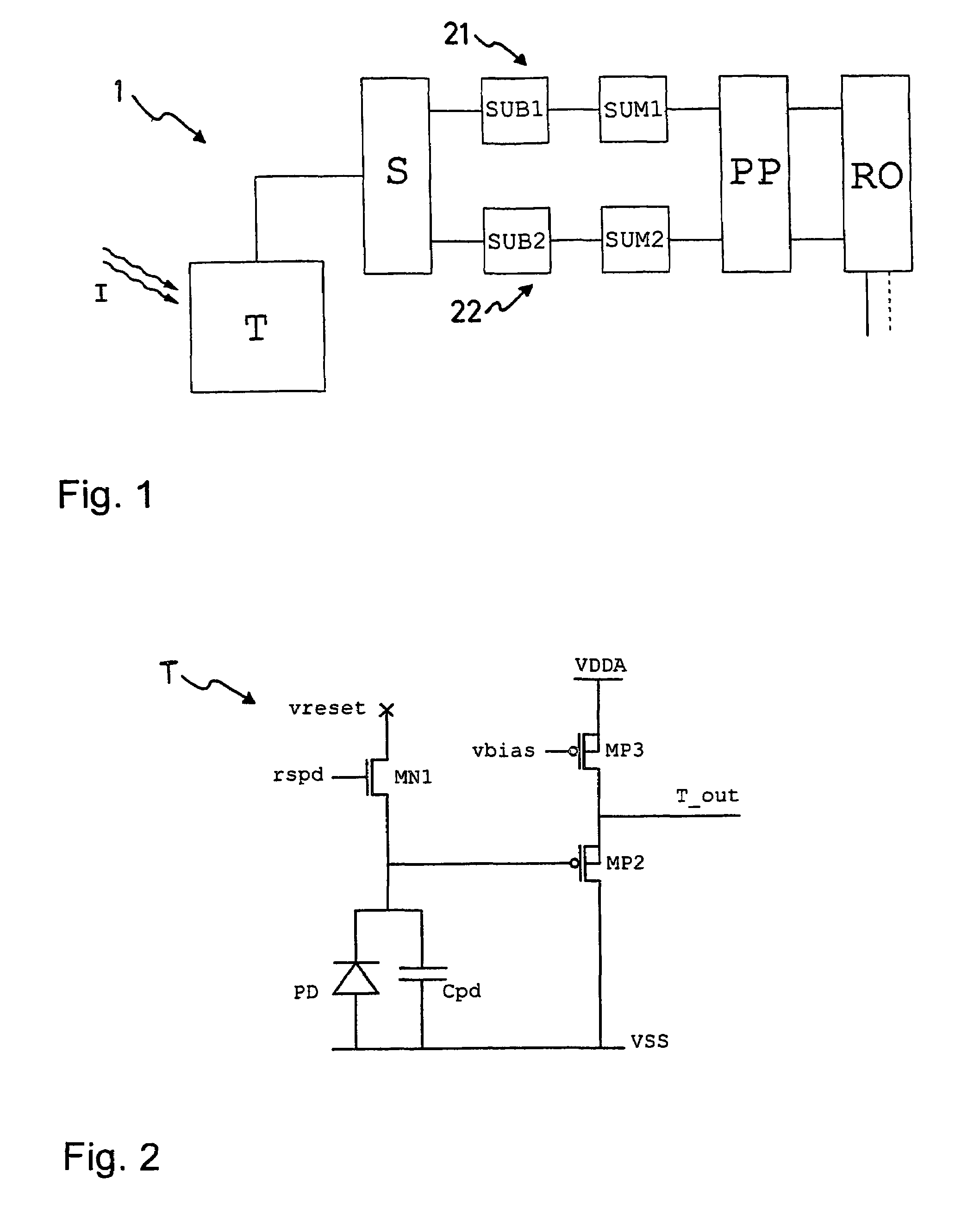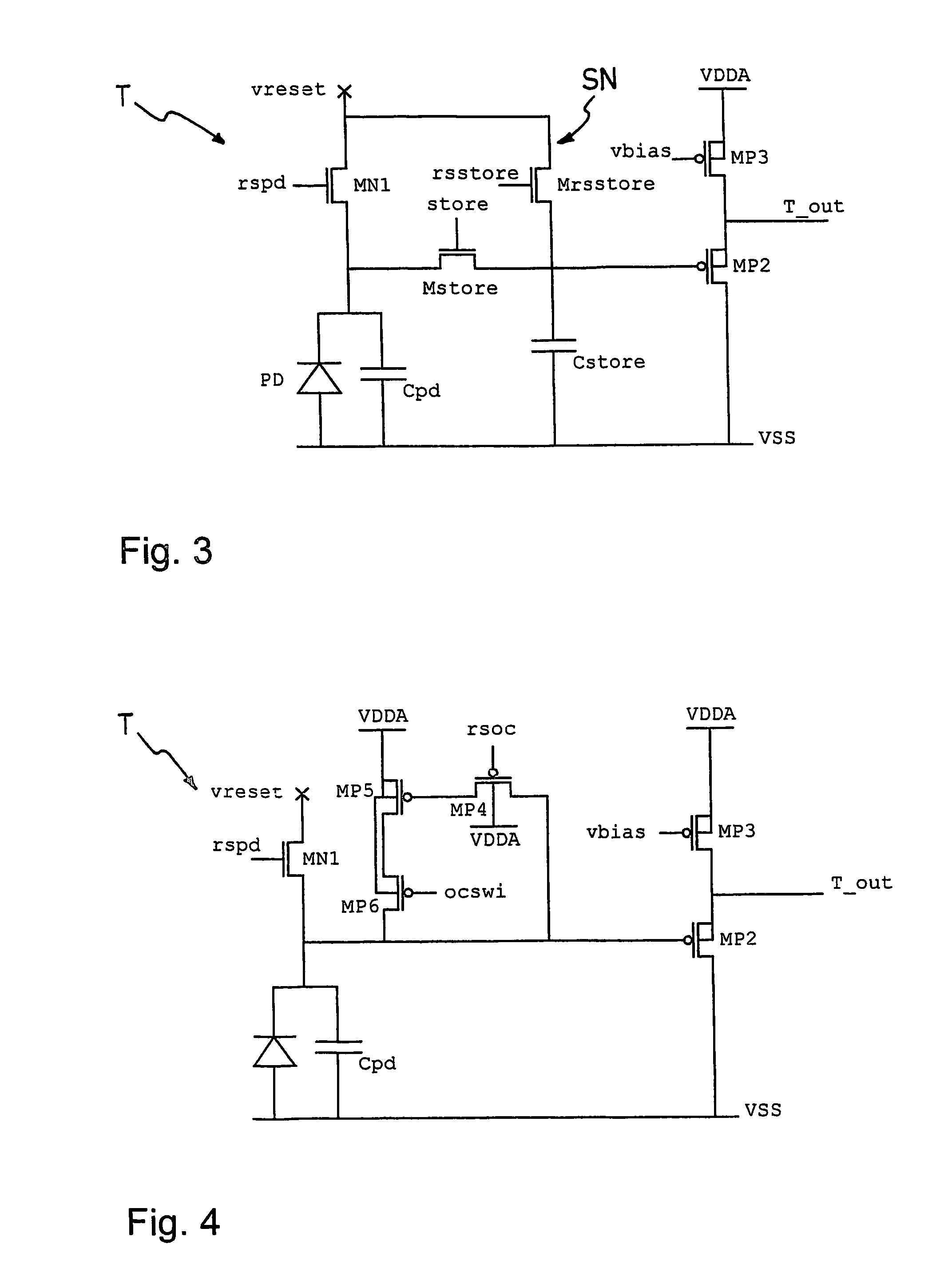Electrical circuit, apparatus and method for the demodulation of an intensity-modulated signal
an intensity-modulated signal and electric circuit technology, applied in the field of sensing and measurement techniques, can solve the problems of incompatibility with the small pixel size, power consumption, complex signal multiplication, etc., and achieve the effects of low electric power consumption, simple driving, and compact siz
- Summary
- Abstract
- Description
- Claims
- Application Information
AI Technical Summary
Benefits of technology
Problems solved by technology
Method used
Image
Examples
Embodiment Construction
[0031]FIG. 1 shows a block diagram of an electrical circuit 1 or a demodulation pixel according to the invention. The electrical circuit 1 comprises a transduction stage T, a sampling or sample and hold stage S, two subtraction stages SUB1 and SUB2, two summation stages SUM1 and SUM2, a signal preprocessing stage PP and a readout stage RO. After the sampling stage S, the signal path is split into two channels 21, 22: a first channel 21 includes the first subtraction stage SUB1 and behind it the first summation stage SUM1, and a second channel 22 includes the second subtraction stage SUB2 and behind it the second summation stage SUM2.
[0032]An input signal I, which is preferably an optical radiation field, is sensed in the transduction stage T and transduced to an electrical signal of any kind (e.g., charge, voltage or current as described for example in U.S. Pat. No. 6,469,489 by S. Bourquin and P. Seitz). The transduction stage T may have an approximate or exact offset compensation,...
PUM
 Login to View More
Login to View More Abstract
Description
Claims
Application Information
 Login to View More
Login to View More - R&D
- Intellectual Property
- Life Sciences
- Materials
- Tech Scout
- Unparalleled Data Quality
- Higher Quality Content
- 60% Fewer Hallucinations
Browse by: Latest US Patents, China's latest patents, Technical Efficacy Thesaurus, Application Domain, Technology Topic, Popular Technical Reports.
© 2025 PatSnap. All rights reserved.Legal|Privacy policy|Modern Slavery Act Transparency Statement|Sitemap|About US| Contact US: help@patsnap.com



